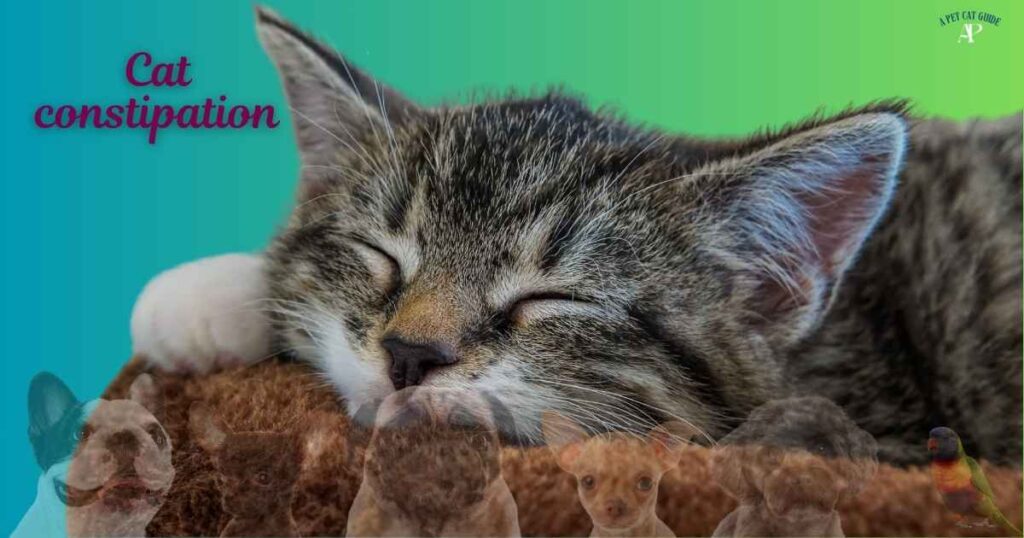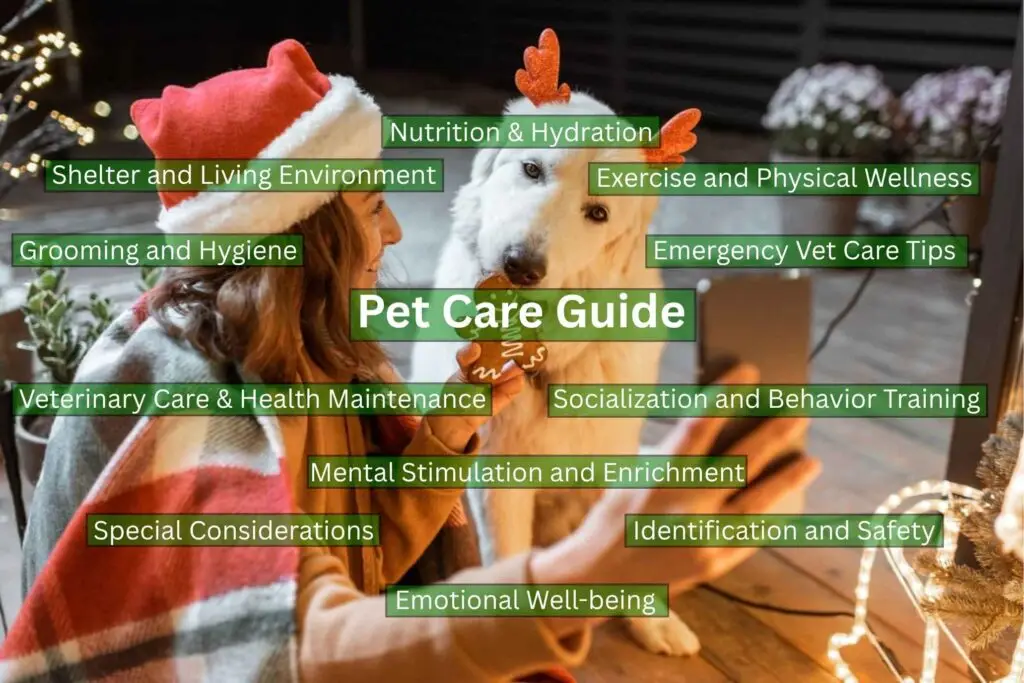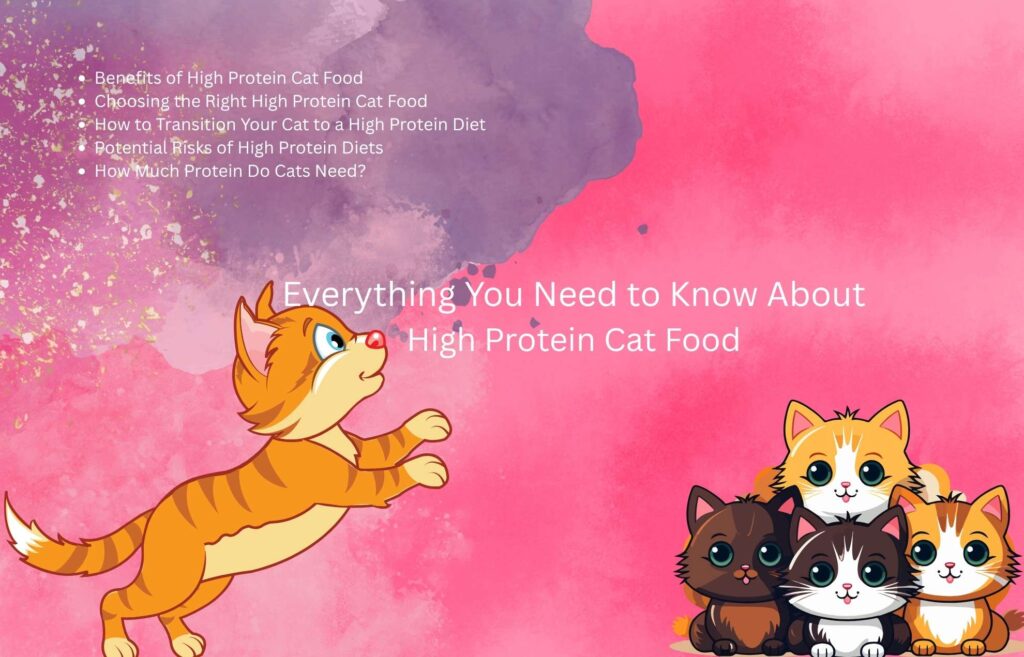Seeing your beloved cat in discomfort is heartbreaking. The common issue that causes them distress is cat constipation. In simple terms, cat constipation occurs when a cat has difficulty passing stool. You might notice them straining in the litter box, or you may find that their feces are unusually dry and hard.
It’s incredibly important to understand the signs of this condition because it’s more than just a minor inconvenience. This problem comes from many sources, ranging from something as simple as their diet to more serious underlying medical conditions. Knowing what to look for is the first step in helping your furry friend feel better. Now I am sharing what you can do for a cat’s constipation.
Common Causes of Cat Constipation
I am trying to understand that the root cause of cat constipation is key to finding the right solution. Several factors can contribute to this uncomfortable condition, which I have listed below.
Dehydration
A leading cause of cat constipation is not drinking enough water. Water helps keep stool soft and easy to pass. Cats on a diet of only dry food, or those with conditions like kidney disease, are more likely to become dehydrated.
Dietary Issues
If you put your cat on a diet. A diet lacking in fiber can make it difficult for waste to move through the digestive tract. Fiber adds bulk to the stool, which helps stimulate the bowels.
Hairballs and Over-Grooming
If you try to over-groom your cats. Cats, especially long-haired breeds, ingest a significant amount of fur while grooming. Sometimes, this hair can form a mass in the intestines, leading to a blockage and constipation.
Sedentary Lifestyle and Lack of Exercise
Physical activity helps stimulate the muscles of the intestines, promoting regular bowel movements. A cat that doesn’t move around much is more prone to digestive slowdowns. So, suffering your cat with constipation.
Foreign Bodies or Obstructions
Curious cats sometimes eat things they shouldn’t, like string, plastic, or bones. These items can get stuck and cause a serious blockage for passing stools.
Medical Conditions:
Feline Megacolon: This is a serious condition where the colon becomes enlarged and its muscles weaken, making it unable to push feces out effectively. Chronic cat constipation can sometimes lead to megacolon.
Arthritis, Kidney Disease, Neurological Issues: Pain from arthritis can make it hard for a cat to squat in the litter box. Likewise, kidney disease often causes dehydration, and neurological problems can affect the nerves that control the intestines. As a result, your cat can suffer constipation.
Stress and Behavioral Factors: Cats are sensitive creatures. A change in their environment, a new pet, or other stressors can cause them to hold their stool, resulting in cat constipation.
Litter Box Issues
If a litter box is dirty, hard to get to, or shared with another cat they don’t like, a cat might avoid using it. This discomfort leads to a habit of holding in stool. As a result of regularly holding it, this can eventually turn into constipation, and it becomes difficult to defecate.
Symptoms and Signs of Cat Constipation
When a cat is suffering from constipation, they often show clear signs of distress. Paying close attention to their behavior can help you spot the problem early.
Straining and Painful Defecation: A major sign of cat constipation is watching your cat go to the bathroom for trying to pass stool. They might even cry out or meow loudly from the pain while trying to defecate.
Hard, Dry Stools: If they do manage to pass Stools, you can see the feces are typically very small, hard, and dry, looking almost like little pebbles. Healthy cat poop should be well-formed and moist.
Litter Box Issues: A cat suffering from cat constipation can avoid the litter box altogether. They try to go just outside of it or visit the box many times without producing anything.
Changes in Behavior: Suffering from constipation can make your cat act differently. They might start hiding more, seem tired and sluggish (lethargic), or walk with a stiff posture. Changes in their appetite or how much water they drink are also common with cat constipation.
Vomiting: It might seem unrelated, but vomiting can be a sign of severe your cat. The strain on their colon and the backup in their digestive system can lead to nausea and vomiting.
Other Red Flags: You may notice your cat has a sore belly. They might flinch if you try to touch their abdomen. A hunched-over posture is another telltale sign that they are in pain from cat constipation.
How to Treat Cat Constipation
I you can identified that your cat has constipation, there are several steps you can take to provide relief from constipation. Now I am trying to share these steps on how to treat cat constipation.
Dietary Changes for Constipation Relief
You can try to change high fiber cat foods from other cat foods, it can make a big difference. Canned wet food is often better than dry kibble for cat constipation because it has higher moisture content. Adding a spoonful of plain, canned pumpkin (not pie filling) to their food can also add helpful fiber.
I know some cat owners. They find success with homemade food recipes or specific fiber supplements recommended by a vet.
Increase Fluid Intake
Making certain your cat drinks enough water is vital. I suggest encouraging them by providing multiple fresh water bowls or investing in a cat water fountain, as many cats are attracted to running water.
As mentioned, water is an excellent way to increase their hydration.
Exercise and Physical Activity
You must encourage your cat to play! Use toys like laser pointers, feather wands, or crinkle balls to get them moving. Regular playtime can stimulate their digestive system and help prevent cat constipation.
Short-Term Relief for Minor Issues
A tiny bit of petroleum jelly (Vaseline) can sometimes help things pass smoothly from minor blockages, like small hairballs. Always check with your vet before trying this. A gentle belly massage may also help stimulate the bowels.
Cat Constipation Supplement
There are various over-the-counter supplements, often containing fiber like psyllium husk, that can be added to food to help with cat constipation.
When to Seek Veterinary Care
If the cat’s constipation is severe, lasts for more than a day or two, or is accompanied by other worrying symptoms, it’s time to call the vet.
A veterinarian can offer treatments like stool softeners, medicated laxatives, an enema, or subcutaneous fluids to rehydrate your cat quickly.
Cat Constipation Remedy at Home
I know some owners who try a simple cat constipation remedy at home. Here are some natural and effective options to consider. Now I am sharing some Cat Constipation remedies at home.
Natural Remedies for Cat Constipation
Pumpkin and certain oils are popular natural choices. These can gently encourage bowel movements without harsh chemicals. So you can try this option at home.
Probiotics for Cats
Good gut health is essential for regular digestion. Probiotics introduce beneficial bacteria to the digestive tract, which can improve overall gut function and help relieve constipation.
Oil for Cat Constipation
Olive Oil: A small amount (about 1/4 to 1/2 teaspoon) mixed into their food can act as a lubricant, passing stools.
Mineral Oil: This should only be used under veterinary guidance, as it can interfere with nutrient absorption if used improperly. But if you can take a mineral oil use guide from you knowing vet over the phone. It will be a great option for constipation.
Coconut Oil: Similar to olive oil, a small amount may help lubricate the stool.
Castor oil for cat constipation: It is generally recommended to avoid castor oil, as it can be too harsh for a cat’s system. But if you can take a castor oil use guide from you knowing vet over the phone. It will be a great option for constipation.
Avocado oil for cat constipation: While the oil might be safe in tiny amounts, the fruit itself is toxic to cats. It’s best to stick to safer options like olive oil.
Pumpkin for Cat Constipation
As a fantastic source of fiber and moisture, a teaspoon of plain canned pumpkin mixed into your cat’s food once or twice a day is an excellent remedy for mild cat constipation.
Cat Constipation Massage
To perform a gentle massage, lie your cat on your side and use your fingertips to make soft, circular motions on their belly, moving from front to back. Stop immediately if your cat shows any signs of pain.
Over-the-Counter and Prescription Medications for Cat Constipation
For more persistent cases of cat constipation, medication might be necessary.
Non-Prescription Options
Laxatone: This is a popular, gentle laxative gel, often flavored to be appealing to cats. It mainly helps pass hairballs but can also provide relief for minor cat constipation. I sometimes use this gel for constipation in my pet cat.
Suppositories: These are rarely used in cats at home and should only be administered under the direct instruction of a veterinarian. But if you know about it, you can use this on.
Over-the-Counter Cat Food for Constipation: Some pet food brands offer special formulas designed for digestive health, which are available at pet stores.
Prescription Medications
Your vet may prescribe stronger stool softeners (like lactulose) or laxatives if home remedies aren’t working.
Gabapentin constipation cat: Gabapentin is primarily a pain or anti-anxiety medication, but it can be used in cases where pain (like from arthritis) is preventing a cat from defecating properly.
Enemas and Subcutaneous Fluids: In severe cases, a vet will perform an enema to manually clear the blockage. They might also give subcutaneous fluids (fluids under the skin) to combat dehydration.
What to Avoid Constipation
Never give your cat human laxatives or medications without explicit instructions from your vet. Many human products are toxic to cats and can be extremely dangerous.
Best Cat Food for Constipation
Choosing the right diet is one of the most effective long-term strategies for managing cat constipation. Now I am sharing how to choose the right food for your constipation cat from my own experience.
High Fiber Cat Food for Constipation
Look for foods that list fiber sources like beet pulp, psyllium, or cellulose. Both wet and dry versions of high-fiber food are available. Like Purina One, Royal Canin, and Blue Buffalo.
Best Wet Cat Food for Constipation
Wet food is generally the top choice because of its high water content. Brands that market digestive care or sensitive stomach formulas are often good options.
Best Dry Cat Food for Constipation
If your cat prefers dry food, choose a formula specifically designed for digestive health. Make certain they have constant access to fresh water to make up for the lack of moisture in the kibble.
Homemade Cat Food for Constipation
If you choose to make your cat’s food at home, work with a vet or veterinary nutritionist. To create a balanced recipe that includes adequate fiber and moisture to prevent cat constipation.
The Role of Pumpkin in Cat Food
Adding a spoonful of pumpkin to their regular wet or dry food is an easy way to boost fiber and help keep things moving smoothly.
Special Considerations for Constipation
Some cats face unique challenges when it comes to cat constipation.
Cat Chronic Constipation: If cat constipation is a recurring problem, it requires a long-term management plan developed with your vet for your constipation’s cat. This often involves a permanent dietary change and sometimes daily medication.
Elderly Cat Constipation: Older cats are more susceptible due to decreased activity, arthritis, and a higher likelihood of having conditions like kidney disease. Managing their diet and hydration is extra important.
Cat Constipation After Surgery: Anesthesia and pain medications can slow down the digestive system, making post-surgery cat constipation common. Your vet will provide guidance on how to manage this.
Constipation in Cats with Diarrhea History: It might seem odd, but a cat can experience both. Sometimes, liquid stool can seep around a hard, impacted mass of feces, looking like diarrhea. This is a serious situation that needs a vet’s attention.
Cat Constipation X-ray: A veterinarian might take an X-ray to see the extent of the blockage, check for foreign objects, or diagnose conditions like megacolon.
Cat Constipation Poop: The appearance of the poop is a key indicator. The goal is to get back to well-formed, moist stools, not hard, dry pellets.
Cat Constipation Blood: Seeing blood in the stool or around the anus after straining is a sign of irritation and means a vet visit is needed right away.
When to Take a Cat to the Vet for Constipation
Knowing when home care isn’t enough is crucial for your cat’s health.
Emergency Situations
- Your cat has been straining to poop for more than 24-48 hours with no success.
- They are also vomiting, refusing to eat, or seem extremely tired.
- You see blood in their stool, or they seem to be in severe abdominal pain.
Why Early Intervention Matters
Waiting too long to treat severe cat constipation can be dangerous. It can lead to a completely blocked colon or the development of feline megacolon, which can require major surgery.
What to Expect During a Vet Visit?
Your vet will likely perform a physical exam, feeling your cat’s abdomen to check for impacted stool. They may also suggest blood work or an X-ray to find the underlying cause of the cat’s constipation.
Final Thoughts About Constipation
In summary, cat constipation is a common but serious issue that requires your attention. By recognizing the symptoms like straining and hard stools, understanding the causes from dehydration to diet, and knowing the available treatments, you can take effective action. Always remember, while home remedies can help with mild cases, your best partner in your cat’s health is your veterinarian.
If you suspect your cat is suffering from cat constipation, don’t hesitate to seek professional care. Making simple lifestyle adjustments and staying observant is the best way to keep your companion happy, healthy, and comfortable. For more information, consult resources from veterinary websites or other trusted pet care guides.
FAQ About Cat’s Constipation
Is Cat Constipation an Emergency?
It can be. If your cat is in clear distress, hasn’t pooped in over two days, or has other severe symptoms, it is an emergency. Mild cat constipation can often be managed at home.
Can a Cat Die from Constipation?
Yes, unfortunately. If left untreated, severe cat constipation can lead to a toxic buildup of waste in the body and a ruptured colon, which is fatal.
Can Changing Cat Food Cause Constipation?
Yes, any sudden change in diet can temporarily upset a cat’s digestive system, sometimes leading to cat constipation. It’s always best to transition to a new food slowly over a week.
Can Constipation Be a Sign of Other Health Problems?
Absolutely. Cat constipation is often a symptom of another issue, such as kidney disease, arthritis, or even tumors.
How Long Can a Cat Go Without Pooping Before It’s Dangerous?
Most healthy cats poop at least once a day. If your cat hasn’t had a bowel movement in more than 48-72 hours, it’s a cause for concern, and you should contact your vet.
What Happens if Cat Constipation Is Left Untreated?
Untreated cat constipation can lead to painful impaction, where the stool becomes a hard, immovable mass. This can stretch the colon permanently (megacolon) and cause serious systemic illness.


